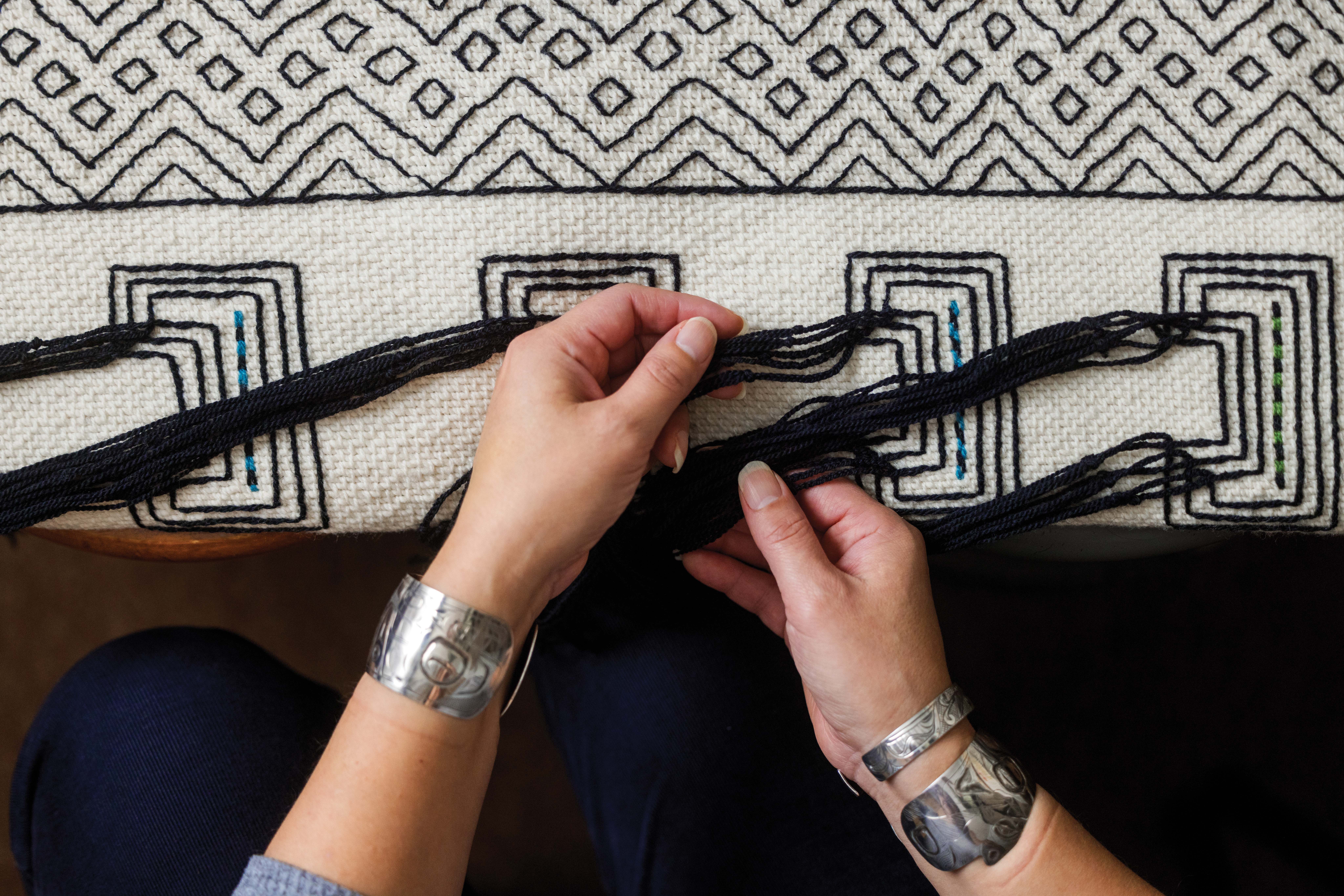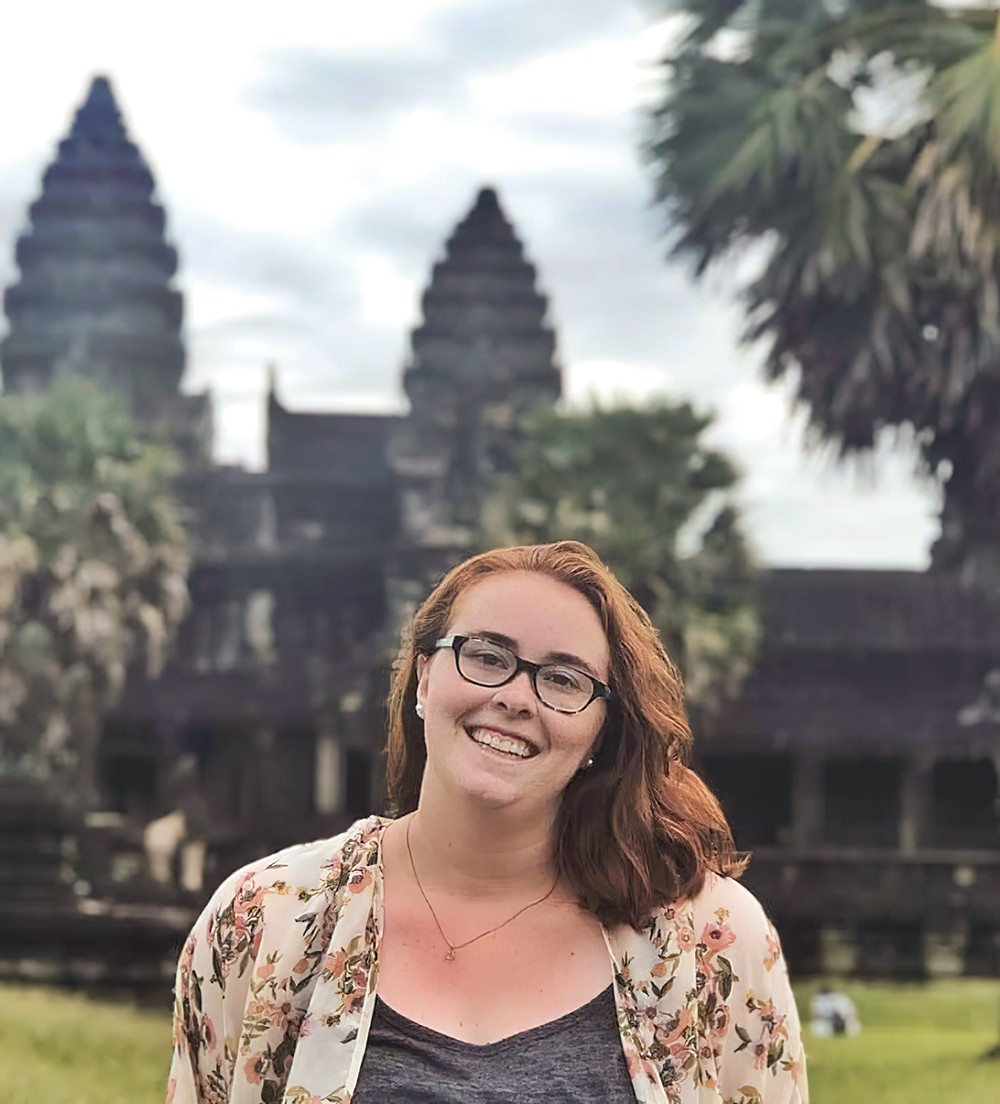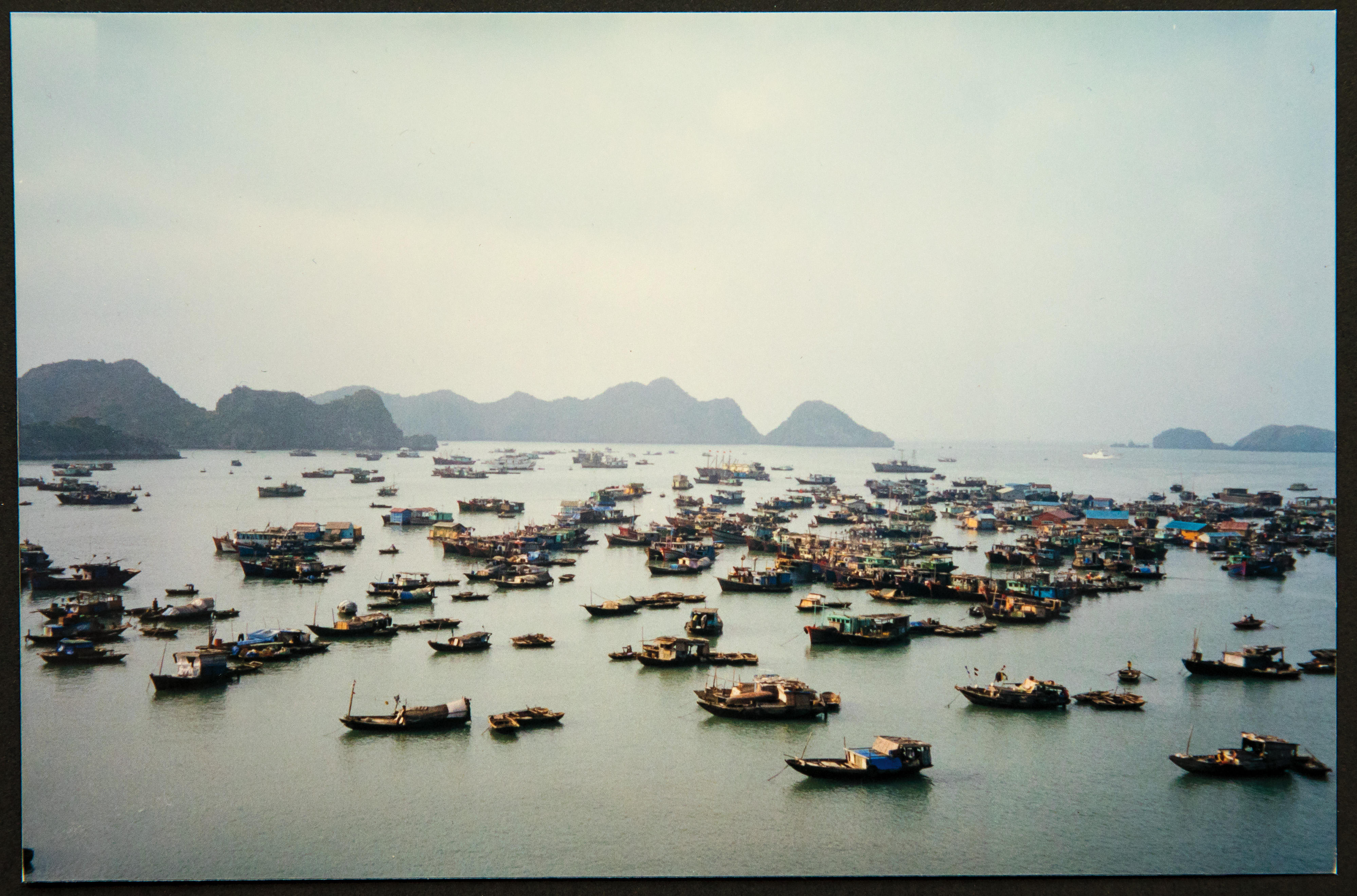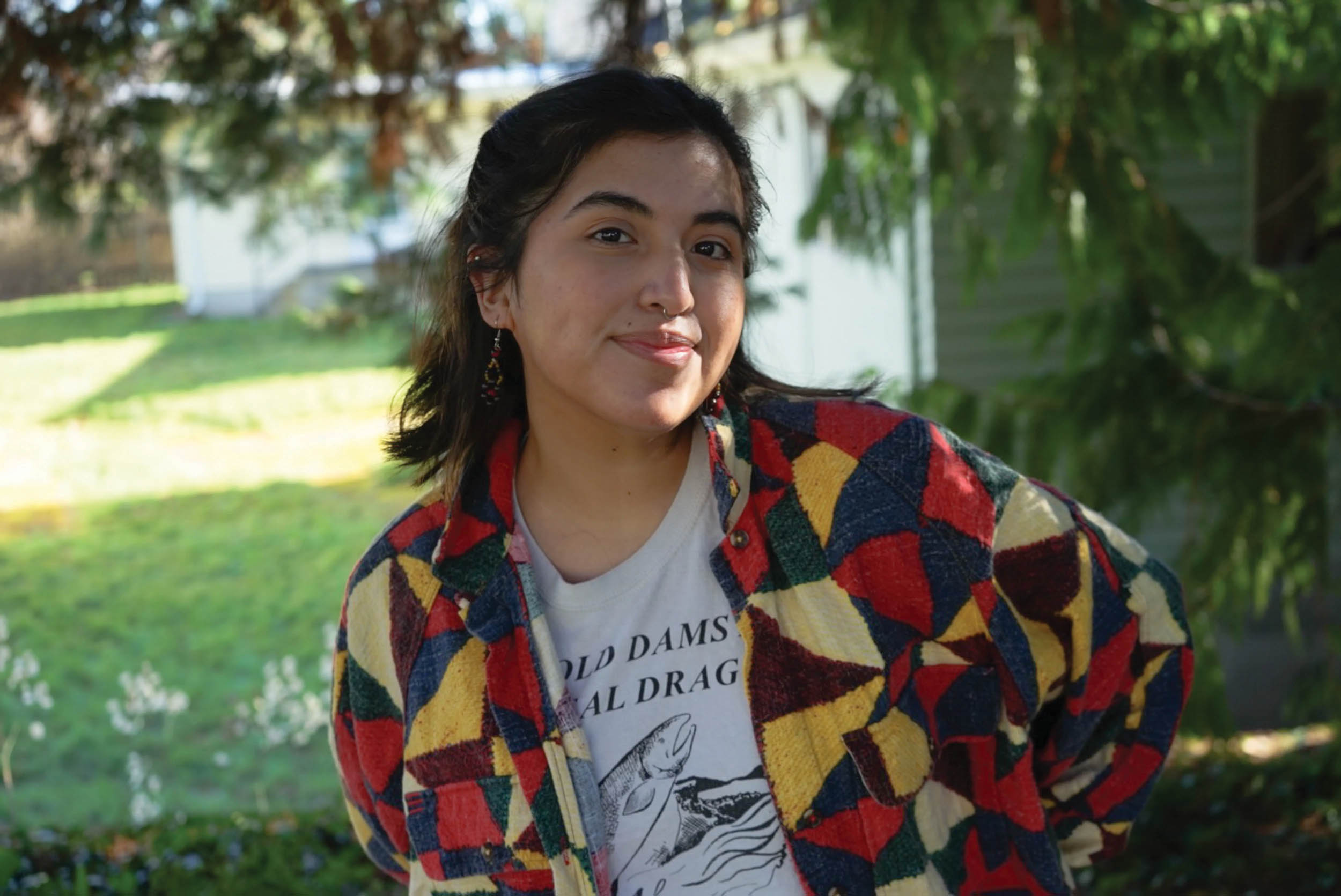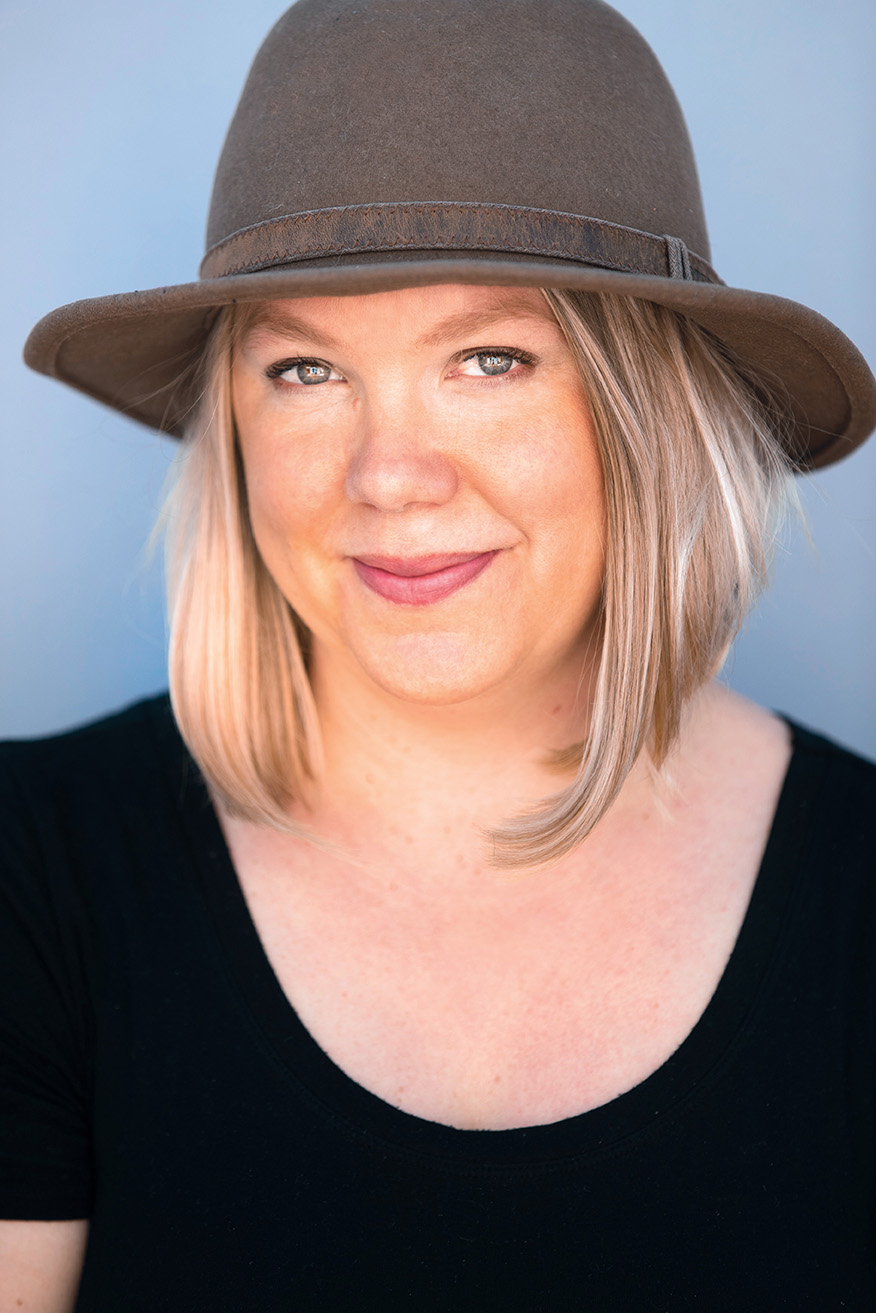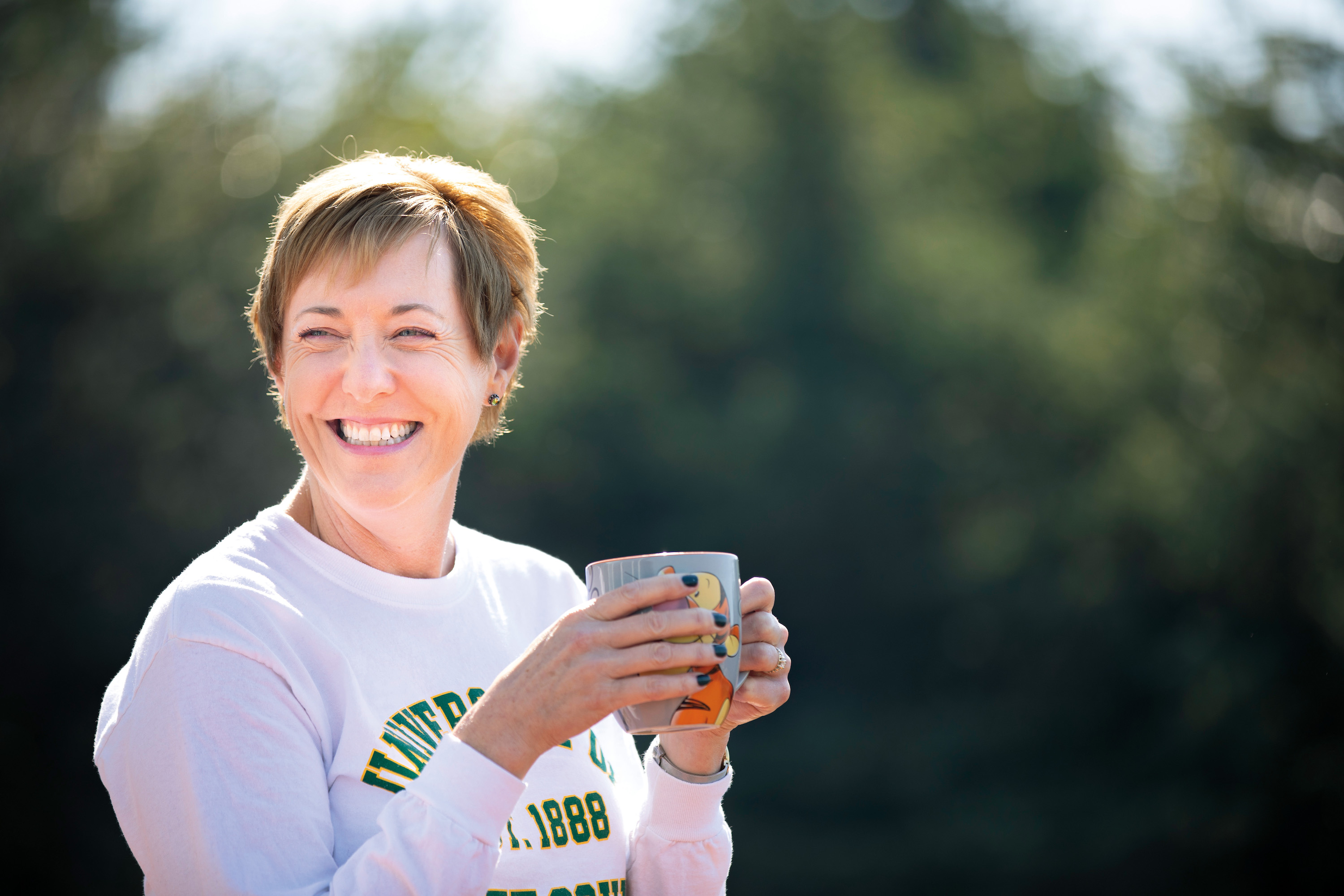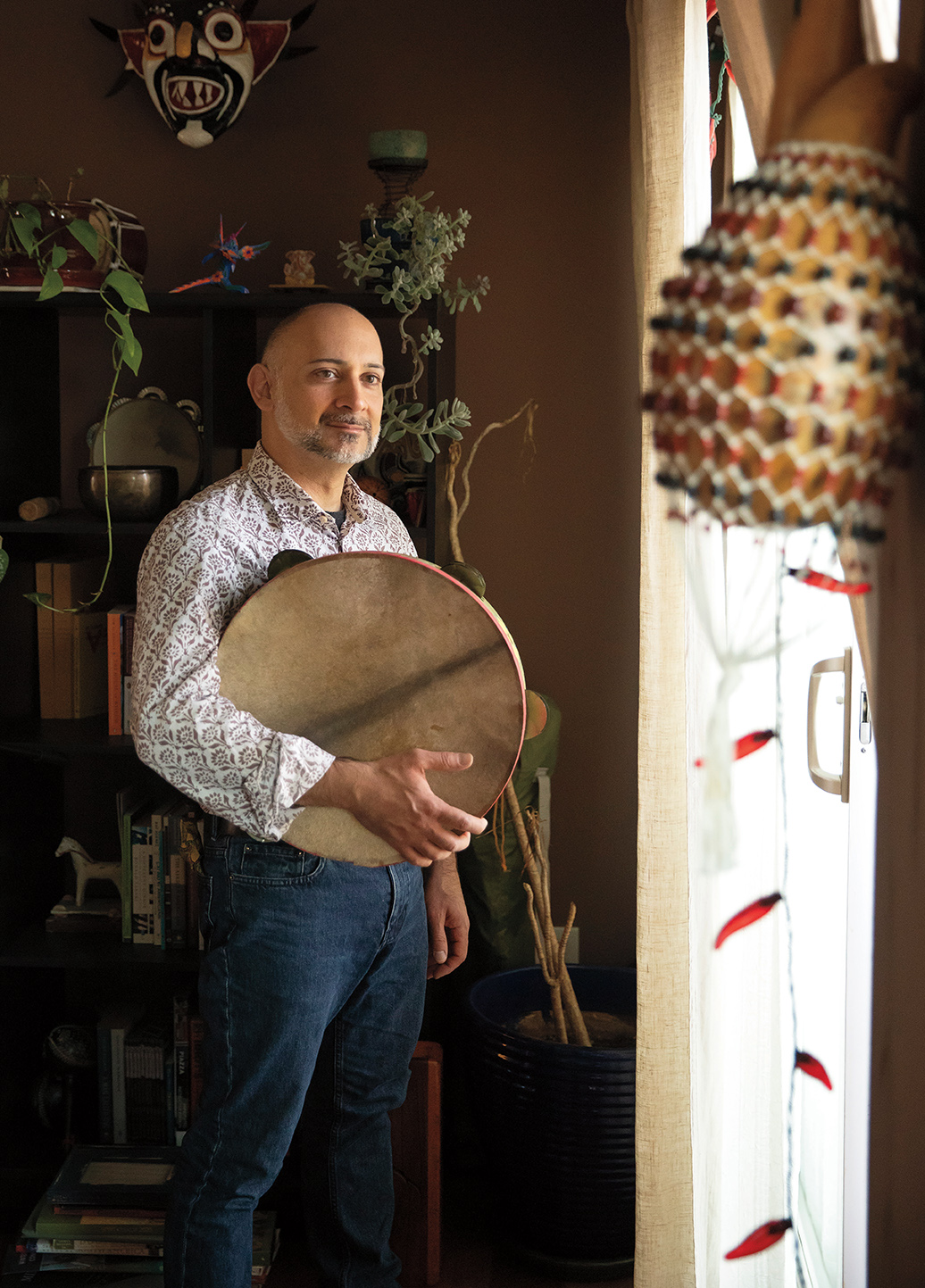How did you end up choosing Puget Sound?
I grew up in Aangóon, which is about 75 miles south of Juneau. It’s a very remote, isolated Tlingit village of about 500 people. And when you live in southeast Alaska, you always have to stop in Seattle before going on. I knew I didn’t want to be in Seattle, so [Puget Sound] seemed like a very close place, but also getting away. And in our high school counselor’s office, there was a large brochure on the University of Puget Sound, and I thought it looked nice. It wasn’t too big.
You came from a family of artists and weavers. Did you know you wanted to pursue art as a career when you got to college?
My mom was an artist and made her living at it. But I didn't go intending to major in art. I was like any other 18-year-old, and I didn't really know what I wanted to do. I didn't decide until towards the end of my sophomore year, maybe it was the beginning of my junior year. After graduation, I went down to the Institute of American Indian Arts in Santa Fe, N.M. I just wanted to go take more art classes and be in Native American country. So, I did that for a semester, just to try it out. After that, I went home, back to Aangóon again, still not knowing what I was going to do with this art degree, and almost immediately got invited into the school. It's a small school, and they asked if I would do some art lessons. So, I started going into classrooms and doing these little art lessons, and the teacher and the principal and superintendent were like, you know, you seem like you would be a really good teacher. They told me there's a program that you can do right here in Aangóon through the University of Alaska, Fairbanks developing rural teachers. So, I got my teaching certificate.
How and when did you learn the two types of Tlingit textile weaving styles, Raven’s Tail and Chilkat?
When I was in high school, I really wanted to learn how to weave. Chilkat weaving was pretty well known—it’s the one with the animal figures. Raven’s Tail is more geometric and at the time it was less well known. There was a woman named Cheryl Samuel, who was researching Chilkat weaving in museums and kept coming across these other geometric weaving that nobody really knew what they were. And so, she kind of rediscovered the style of Raven's Tail weaving. And I was fascinated by that. I really wanted to learn it. And my mom happened to know her, and so she helped arrange to get Cheryl to come out to Aangóon to teach a Raven’s Tail weaving class. That was in 1990 and 1991, when I was just finishing up high school.
Later on, another woman, who is now known as Clarissa Rizal, was one of a handful of Chilkat weavers, and I really wanted to learn Chilkat. My mom happened to have been her teacher, so she hooked us up, and I found out when Clarissa was going to do a small Chilkat weaving class. That was in 1997 or 1998, right after I came home from college and was getting started in teaching. And so, I started to learn that. And you know, life was going on all through all of this, so it was a slow progression, but looking back on it, weaving really has been a passion or a very strong interest of mine for a long time.
What does your art look like these days? Do you find yourself creating for yourself and your family, or are you working on bigger projects?
I guess I have two paths that I mainly go down. One is creating more contemporary kind of pieces where I'm bringing together a lot of different ideas. And lately, it's really been with octopus bags. And the other has been traditional robes. Those take a long time to create. So, I've kind of gravitated towards octopus bags for a whole plethora of reasons, but really, because they're a smaller scale. So, I've been having a lot of fun finding themes and creating different octopus bags. That's kind of my more contemporary creative outlet. The other path is really around our culture and traditions and the use of regalia.
What do you think of when you are creating your art? Are you thinking of the story you are telling? Or is it more technical where you are focused on the pattern and plan of your creation?
I think what inspires me most is thinking of a story to tell and then thinking of multiple ways to depict that through multiple mediums, whether it's beadwork or weaving like Raven's Tail or Chilkat, or how we make our button robes. I like thinking of how to present a story or imagery in multiple ways. With my art, if you give me a really good idea, I will think of so many different ways to show that idea.
Would you have ever guessed back in the early 1990s at Puget Sound that you would be here, and that your art would be tied into this historic event, and you'd be creating pieces that would be at a museum?
It's incredible. Life is so amazing. I never, never would have guessed when I was at Puget Sound that this would be my life. I came from an all-native village where we had 10 people in my high school class, and we had one of the bigger classes—I think the class before me had four and the class after me had six. The environment at Puget Sound felt very rich, you know, and was not like anything I had ever experienced. They were two extreme environments, going from where my home was, and coming to Puget Sound. It really gave me the opportunity to think about who I was as a person, and really made me become very self aware of being a native person and what that meant.
Do you have the loom or the equipment you use to weave in your house? Or is there a guild that you work at? How is your work set up?
Our type of weaving just uses a wooden frame, and the warps just hang freely. So, it doesn't require what you might think of as a loom. We still call it a loom, but it's really just a frame—it’s a board with holes in it that we hang the warps off. So, everything has been in our homes. I've done all of my work out of our house. I apologize and joke with my family, because it's like my studio is in our kitchen, on the table and counter, in the bedroom and the garage—I'm just everywhere. But now that I am working on a big project, I just rented a studio space. But even so, I have weaving on our kitchen table right now, even though I also have a studio.
What is the bigger project you are working on?
In 2023, I received a Rasmuson Foundation award to create a series of robes including four dance robes in four distinct styles (Raven’s Tail, button blanket, cedar bark, and Chilkat) to tell the history of the 1882 Navy bombardment of Aangóon. I was also one of six artists selected for the Alaska State Museum 2024–2026 Solo Artist Exhibition Series. I’ll create 10 robes documenting the history of Aangóon when we were bombed by the United States. That show will take place in November 2026.
Throughout my teaching career, being in Aangóon, I've always taught this. It’s a huge part of our history in Aangóon. We have a big commemoration every year because the U.S. Navy had never apologized for it, and the people of Aangóon have been asking the Navy for an apology since, well, since it happened in 1882. There was a big ask in 1982 at the 100-year commemoration and one six years later, but there was never an apology. We were always teaching about this at school, and I was thinking that we tell our history on our regalia, on our robes, and I wanted to tell that history on the robe, and so applied for both of those projects—and then discovered I was successful with both. So that's my big project. I'm working on these 10 robes that tell the history of the bombardment of Aangóon.
I applied for these about two years ago, and in May of 2024, we got word that the Navy was actually going to apologize. So, there was a big event on Oct. 26, 2024, where the Navy came to Aangóon and apologized for the bombing of Aangóon. Part of my application was about how there was still no apology. And now—they have apologized.
Shgendootan George is the daughter of Gabriel and JoAnn George; her grandparents are Jimmy and Lydia George and Kelly and Olive Callahan, and her clan house is the Keet Oxoo Hít (Killer whale tooth house). Her work can be found at the Anchorage Museum, Stonington Gallery, and other art institutions.
'Wáats'asdíyei Joe Yates is the owner of Alaskan Films, LLC and a two-time Emmy-nominated writer for the PBS Kids’ show Molly of Denali. A Haida from Craig, Alaska, Yates is committed to keeping his culture alive through film.
